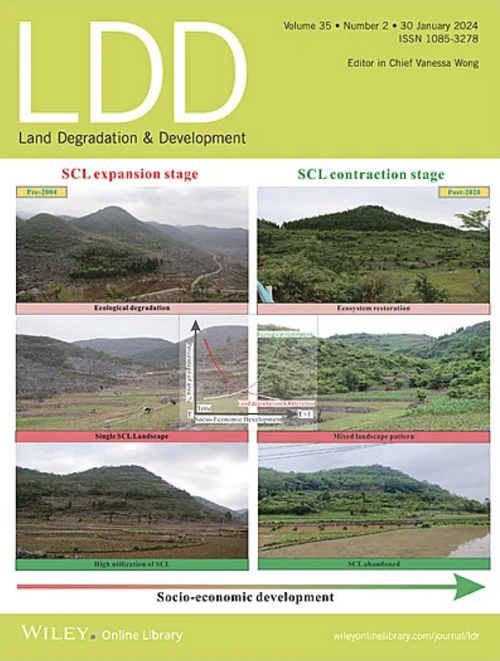Expanding Forest Cover Increases the Ecosystem Service Values of Dry Afromontane Forests in Tigray, Ethiopia
IF 3.6
2区 农林科学
Q2 ENVIRONMENTAL SCIENCES
引用次数: 0
Abstract
Ecosystem service valuation is crucial for ensuring the sustainability of ecosystem functions. However, the ecosystem services provided by expanding dry Afromontane forests, which could show potential for conservation sustainability, have not been adequately quantified. This study aims to fill knowledge and methodological gaps by assessing the value of the Hugumburda Dry Afromontane Forest (HDAF) in Tigray, Ethiopia, using the Ecosystem Services Provision Index (ESPI), updated ecosystem service (ES) valuation coefficients, and the ES value (ESV) function. We applied the Economics of Ecosystems and Biodiversity (TEEB) model to analyze provisioning, regulating, supporting, and cultural ESs. Satellite imagery from the US Geological Survey (USGS) over the past four decades, along with 240 control points, helped highlight the inherent values of the forest. Our results show that HDAF forest cover is expected to increase by 19.1 km2 (3.8%) by 2030, up from 88.6 km2 in 2020. Consequently, ESV provisions are projected to increase by 1.88 million US dollars annually, benefiting the local community if current conservation and expansion efforts continue. We found a significant correlation (p < 0.01) between the ESV and the area expansion of forestland, shrubland, arable land, grassland, and water bodies. The ESPI values were highest in forestland and grassland (0.38) and lowest in water bodies (−0.51). HDAF primarily provides regulatory services, followed by provisioning, supporting, and cultural services. The combination of optical remote sensing and ESPI is crucial for valuing ESs, promoting sustainable management practices, and recognizing the increasing benefits of forest cover for both environmental and social outcomes. ES increases are influenced not only by forest cover expansion but also by the quality of that cover.求助全文
约1分钟内获得全文
求助全文
来源期刊

Land Degradation & Development
农林科学-环境科学
CiteScore
7.70
自引率
8.50%
发文量
379
审稿时长
5.5 months
期刊介绍:
Land Degradation & Development is an international journal which seeks to promote rational study of the recognition, monitoring, control and rehabilitation of degradation in terrestrial environments. The journal focuses on:
- what land degradation is;
- what causes land degradation;
- the impacts of land degradation
- the scale of land degradation;
- the history, current status or future trends of land degradation;
- avoidance, mitigation and control of land degradation;
- remedial actions to rehabilitate or restore degraded land;
- sustainable land management.
 求助内容:
求助内容: 应助结果提醒方式:
应助结果提醒方式:


